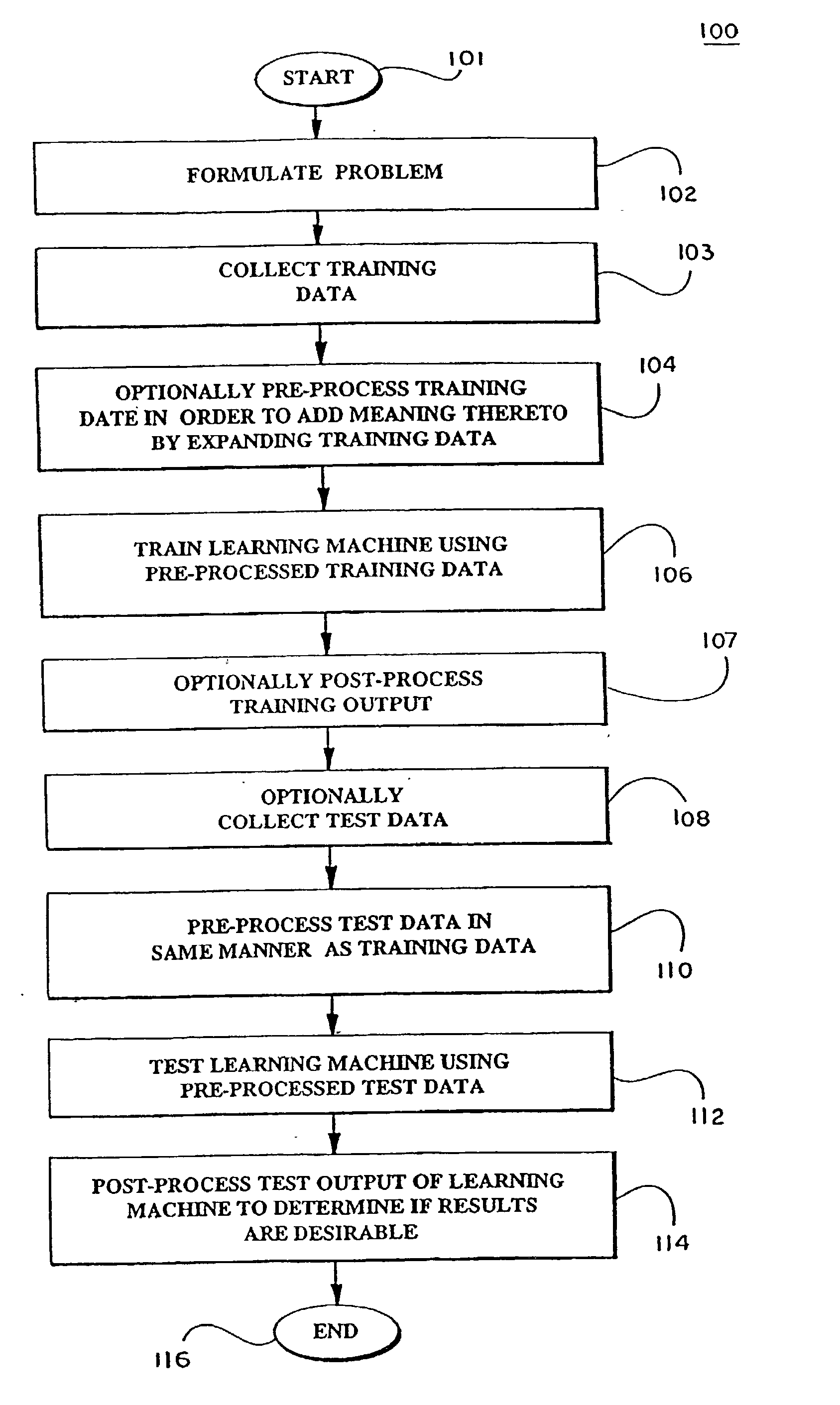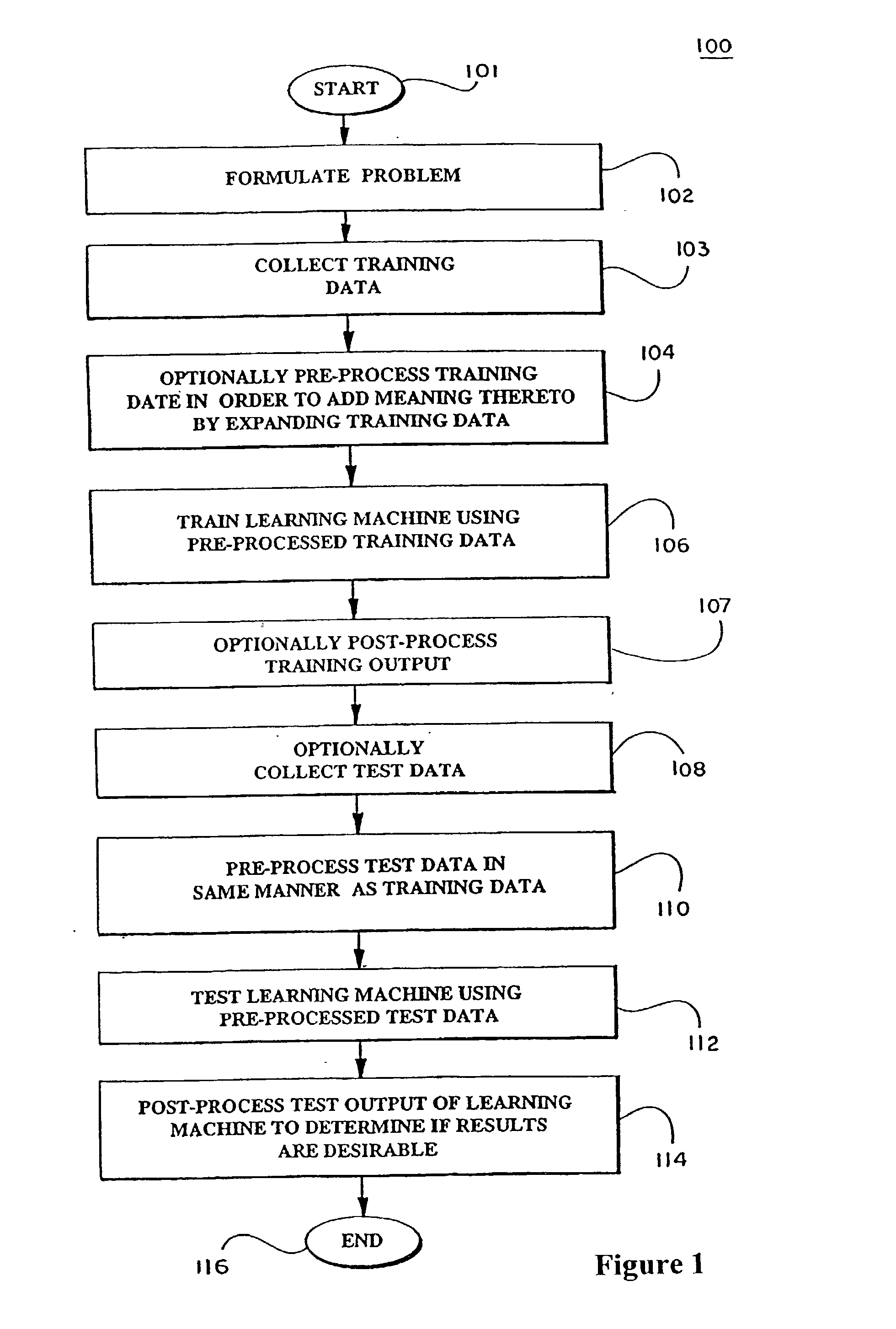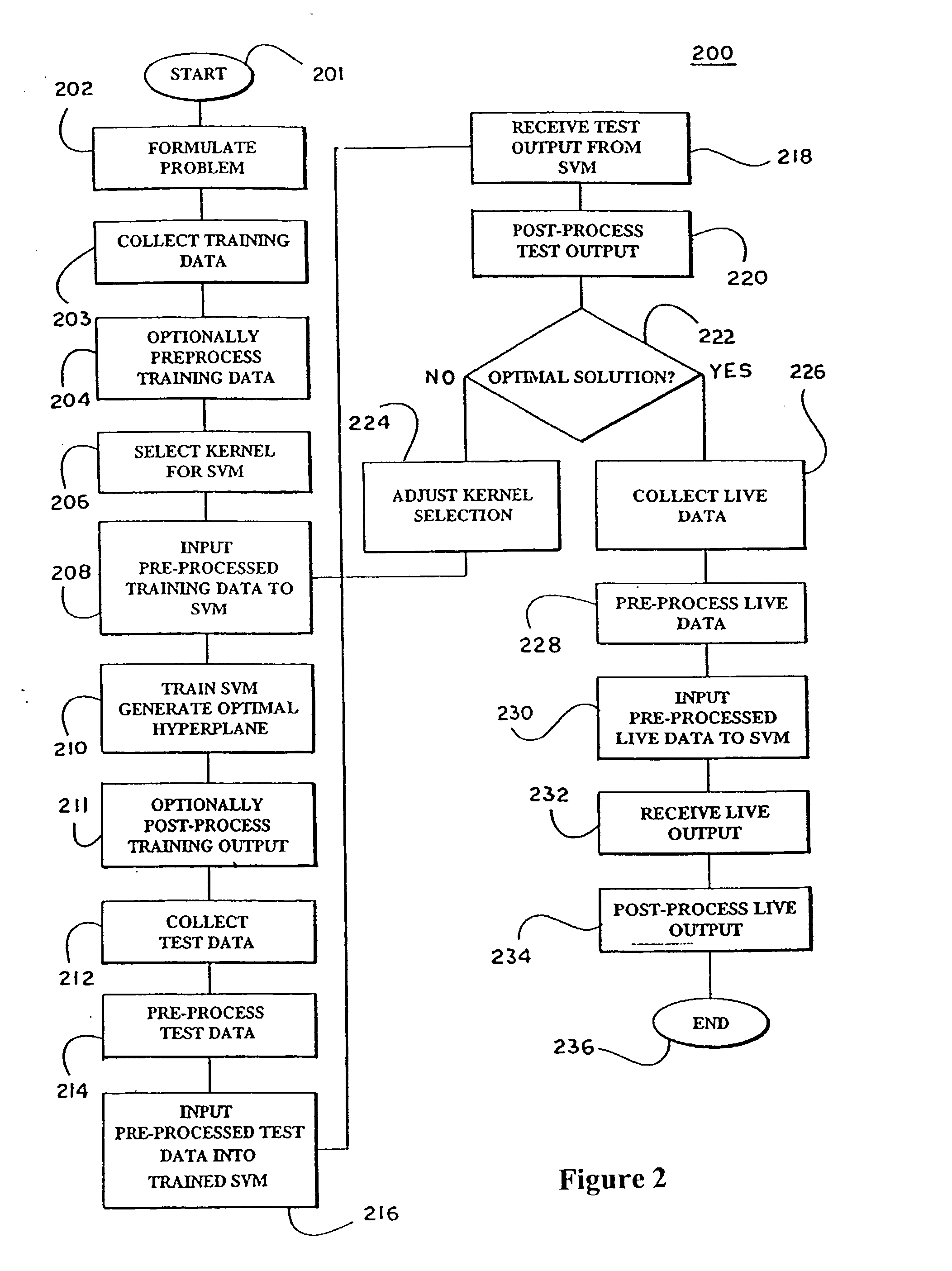Kernels and kernel methods for spectral data
a kernel method and spectral data technology, applied in the field of learning machines, can solve the problems of additional noise or signal drift, data recorded using such measurement devices is subject to problems in subsequent processing, etc., and achieve the effect of enhancing knowledge discovery
- Summary
- Abstract
- Description
- Claims
- Application Information
AI Technical Summary
Benefits of technology
Problems solved by technology
Method used
Image
Examples
example 1
Analysis of Spectral Data
[0143] The dataset comes from Rio Grande Medical Technologies consisting of a set of curves coded as vectors of length 1688 and that are described as spectra. The task is to discriminate these spectra from a learning set built of 151 spectra of class 0 and 145 spectra of class 1. Thus, the learning set has a size of 296. The generalization set is not known: it is formed only by the spectra but not by the corresponding labels.
[0144] A linear SVM has been trained on the whole learning set. The dataset is linearly separable with a margin of 1.3e-3.
[0145] In the experiments, the dataset is used as it is (referred as the “original dataset”) or it is normalized (referred as the “normalized dataset”). The normalization consists in subtracting for each spectrum its mean over its coordinates and then to divide all spectra by their own standard deviation.
[0146] To deal with this discrimination problem, a linear SVM is applied as follows: minw,bw22+C∑i=1m ξi ...
examples
[0250] In the following examples, a standard SVM is compared with several methods taking into account invariances: [0251] Standard SVM with virtual example (VSV). [0252] Invariant SVM as described in above (ISVM). [0253] Invariant hyperplane in kernel PCA coordinates as described above (IHKPCA). [0254] SVM trained with points preprocessed through the linear invariant hyperplane method (LIH)
[0255] The last method refers to disclosure provided by Schölkopf, Simard Smola and Vapnik (supra) where the authors describe the invariant linear SVM. In the following examples, the training and test points were linearly preprocessed using Cγ−1 (Equation 73). Afterwards, instead of training a linear SVM, a nonlinear SVM was trained. Even though there is no guarantee that such an approach will work, experimental results on the NIST (National Institute of Standards and Technology) set showed a slight improvement over the standard nonlinear SVM. The examples include tests run on a toy problem and a...
example 2
Toy Problem
[0259] Referring to FIG. 7, the toy problem is as follows: the training data has been generated uniformly from [−1,1]2. The. true decision boundary is a circle centered at the origin:
f(x)=sign(x2−0.7). (103)
[0260] The a priori knowledge to be encoded in this toy problem is local invariance under rotations. Therefore, the output of the decision function on a given training point xi and on its image R(xi,ε) obtained by a small rotation should be as similar as possible. To each training point, a tangent vector dxi is associated which is actually orthogonal to xi
[0261] A training set of 30 points was generated and the experiments were repeated 100 times. A Gaussian kernel K(x,y)=exp(x-y22σ2)(104)
was chosen.
[0262] The results are summarized in FIGS. 8a and 8b, with the following observations: [0263] For each σ, adding virtual training examples reduces the test error. [0264] The ISVM and IHKPCA methods yield almost identical performances, especially for large values ...
PUM
| Property | Measurement | Unit |
|---|---|---|
| mass | aaaaa | aaaaa |
| mass | aaaaa | aaaaa |
| pH | aaaaa | aaaaa |
Abstract
Description
Claims
Application Information
 Login to View More
Login to View More - R&D
- Intellectual Property
- Life Sciences
- Materials
- Tech Scout
- Unparalleled Data Quality
- Higher Quality Content
- 60% Fewer Hallucinations
Browse by: Latest US Patents, China's latest patents, Technical Efficacy Thesaurus, Application Domain, Technology Topic, Popular Technical Reports.
© 2025 PatSnap. All rights reserved.Legal|Privacy policy|Modern Slavery Act Transparency Statement|Sitemap|About US| Contact US: help@patsnap.com



